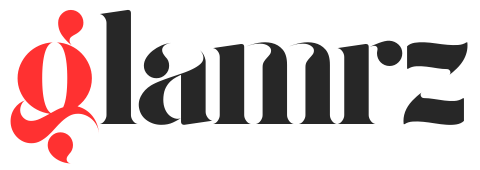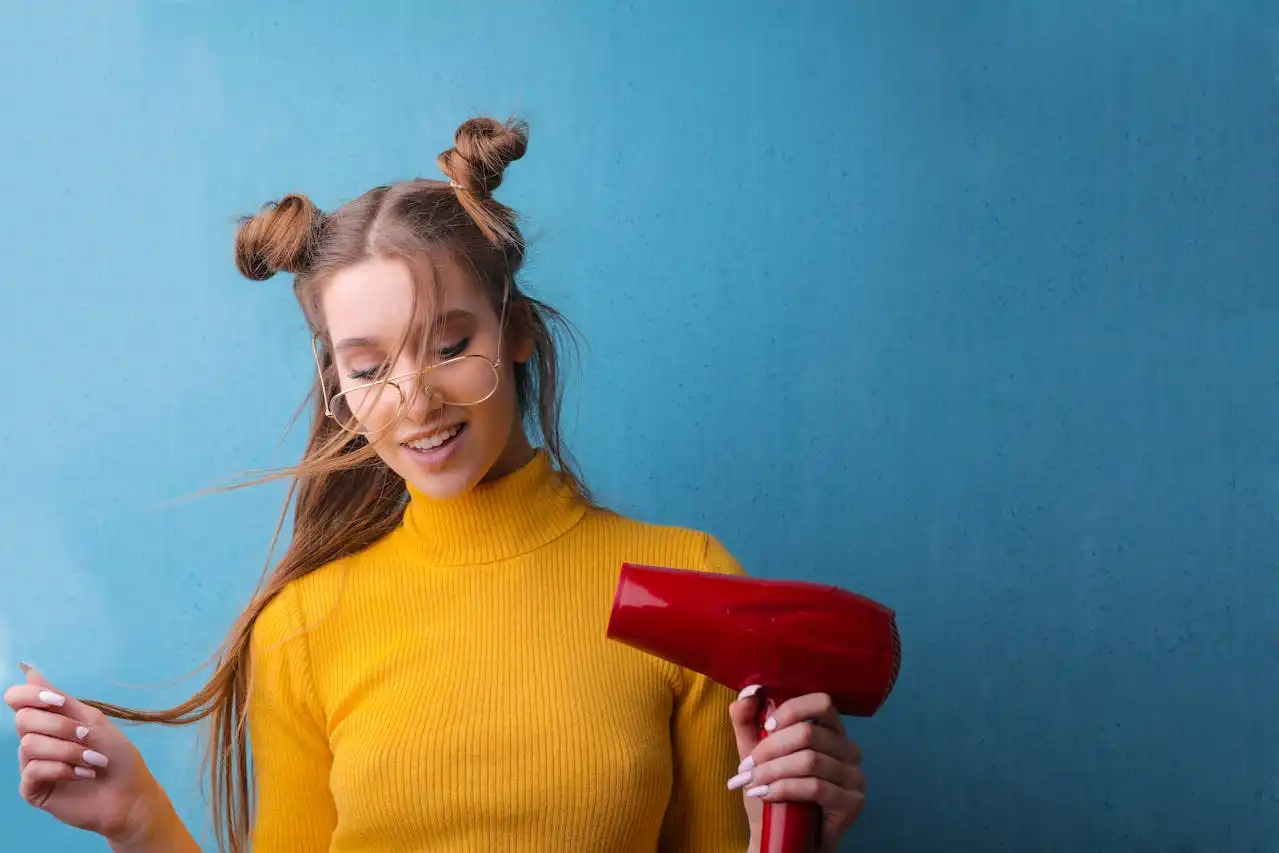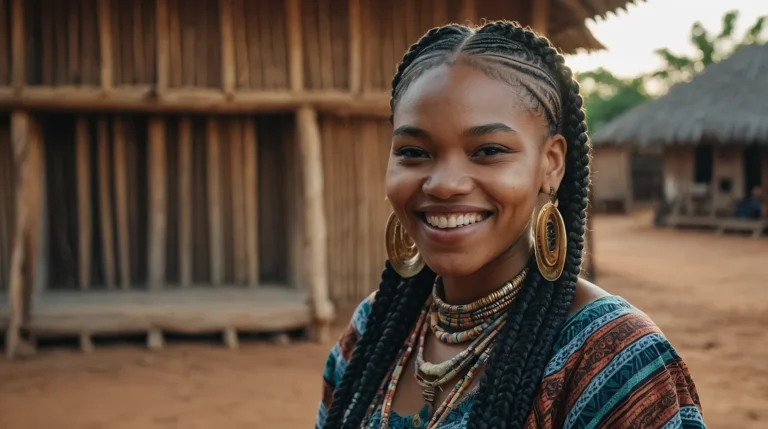Air-Drying vs. Blow-Drying: What’s Better for Your Hair?
You’ve probably stood in front of your bathroom mirror countless times, wet hair dripping, wondering whether you should reach for that blow dryer or just let nature take its course.
This age-old hair care debate affects millions of people daily, and the answer isn’t as straightforward as you might think.
The Science Behind Air-Drying Your Hair

When you let your hair air-dry, you allow water to evaporate naturally from your strands. During this time, your hair maintains its natural texture and curl pattern.
This gentle process happens slowly, giving your hair cuticles time to close properly as moisture leaves.
Your hair remains in its most natural state during this process, which means less manipulation and potentially less damage.
Air-drying works by letting water molecules gradually escape from your hair shaft without external heat or force.
This natural evaporation process typically takes anywhere from two to six hours, depending on your hair’s thickness, length, and porosity.
The absence of heat during air-drying means your hair’s protein structure stays intact. Without this disruption, your hair dries in its most authentic form.
Heat can break down the hydrogen bonds in your hair temporarily, which is why blow-drying can change your hair’s shape.
However, prolonged wetness isn’t always beneficial. When your hair stays wet for extended periods, it becomes more vulnerable to breakage.
Wet hair stretches more easily than dry hair, making it prone to damage from brushing, toweling, or even sleeping on it.
What Blow-Drying Does to Your Hair
Blow-drying uses heated air to speed up water evaporation from your hair.
This process involves applying direct heat and airflow to force moisture out quickly, typically reducing drying time to 10-30 minutes depending on your hair type and the dryer’s power.
The heat from your blow dryer temporarily breaks hydrogen bonds in your hair shaft.
This breakage allows you to reshape your hair’s texture and add volume or smoothness that wouldn’t naturally occur.
Professional-grade dryers can reach temperatures of 140-180°F, while regular home dryers usually operate around 80-140°F.
Modern blow dryers often include ionic technology, which releases negative ions that break down water molecules for faster drying.
This technology can reduce frizz and add shine to your finished look. However, the speed and convenience come with trade-offs.
Excessive heat exposure can damage your hair’s cuticle layer, leading to dryness, brittleness, and split ends over time.
The mechanical action of brushing while blow-drying can also cause physical damage, especially when your hair is still damp and vulnerable.
How Your Hair Type Influences the Best Drying Method
Your hair’s natural texture, thickness, and porosity significantly impact which drying method works best for you.
Fine hair behaves differently than thick hair, and straight hair has different needs than curly hair.
If you have fine hair, blow-drying might give you the volume and body that air-drying simply can’t provide.
Fine hair often looks limp and lifeless when air-dried, lacking the lift that heat styling can create.
However, you’ll need to use lower heat settings to prevent damage to your delicate strands.
Thick, coarse hair often benefits from air-drying because it naturally has more body and structure. The extra drying time allows your hair’s natural texture to develop fully.
When you blow-dry thick hair, you might find it becomes frizzy or unmanageable without proper technique and products.
Curly and wavy hair types typically look better when air-dried. The natural drying process allows your curls to form their intended pattern without disruption.
Blow-drying curly hair without a diffuser often results in frizz and loss of curl definition.
Color-treated or chemically processed hair requires extra care regardless of your drying method.
These hair types are more porous and damage-prone, making gentle air-drying often the safer choice for maintaining hair health and color vibrancy.
Comparing Damage Levels Between Methods
The damage potential differs significantly between air-drying and blow-drying, though both methods can cause problems when done incorrectly.
Understanding these risks helps you make informed decisions about your daily routine.
Blow-drying creates immediate heat damage when you use excessive temperatures or hold the dryer too close to your hair.
This thermal damage affects your hair’s protein structure, potentially leading to weakness, breakage, and loss of elasticity.
Regular high-heat blow-drying can cause cumulative damage that becomes noticeable over time.
Air-drying eliminates heat damage but introduces other potential problems. Your technique matters more than your chosen method.
Extended wetness can cause hydra fatigue, where your hair swells and contracts repeatedly as it gains and loses moisture.
This cycle can weaken your hair’s structure over time, particularly if you frequently go to bed with damp hair.
The mechanical damage from brushing wet hair during air-drying can be just as harmful as heat damage.
Wet hair stretches up to 30% more than dry hair, making it extremely vulnerable to breakage when manipulated.
Proper blow-drying with heat protection and appropriate temperatures can be less damaging than rough air-drying practices.
Similarly, gentle air-drying techniques can preserve your hair’s health better than careless blow-drying.
Time and Convenience Factors
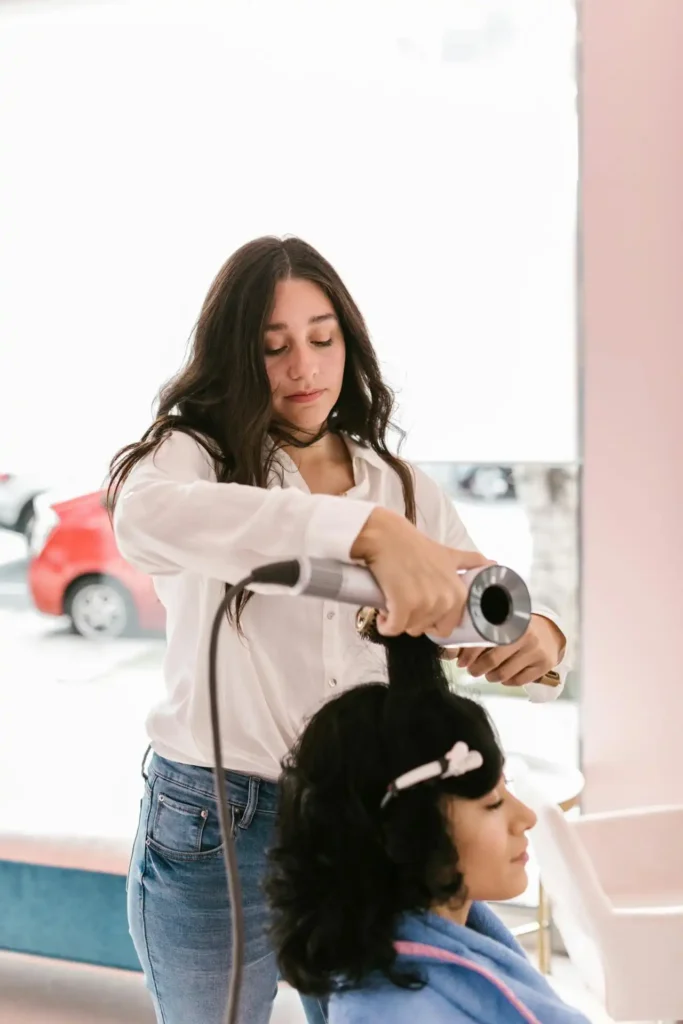
Your lifestyle and schedule often dictate which drying method works best for your routine.
Both approaches have distinct advantages and challenges when it comes to time management and convenience.
Blow-drying offers immediate results, making it ideal for busy mornings or last-minute styling needs.
You can wash and style your hair within 30-45 minutes, depending on your hair’s length and thickness.
This speed makes blow-drying particularly appealing for people with demanding schedules.
Air-drying requires planning and patience. You need to factor in several hours for your hair to dry completely, which might not align with your daily routine.
However, this method frees up your time for other activities once you apply your products and set your hair’s position.
The unpredictability of air-drying can be frustrating. Weather conditions, humidity levels, and seasonal changes all affect how your hair dries and looks.
You might wake up with perfect hair one day and unruly hair the next, making it challenging to achieve consistent results.
Blow-drying gives you more control over your final look. This control makes blow-drying more reliable for important events or professional settings.
You can direct your hair into specific styles, add volume where needed, and create smooth, polished results regardless of external factors.
Best Practices for Air-Drying Success
If you choose to air-dry your hair, specific techniques can help you achieve better results while minimizing potential damage.
These practices work with your hair’s natural properties rather than fighting against them.
Start with the right products. Leave-in conditioners, curl creams, and anti-frizz serums applied to damp hair can enhance your natural texture and provide protection during the drying process.
Choose products specifically formulated for air-drying to get the best results. This technique reduces frizz and prevents unnecessary roughing up of your hair cuticles.
Gently squeeze excess water from your hair using a microfiber towel or cotton t-shirt instead of rubbing vigorously with a regular towel.
Detangle your hair carefully while it’s still damp, using a wide-tooth comb or detangling brush designed for wet hair.
Work from the ends upward to minimize breakage and avoid pulling on tangles. The way you arrange your hair while wet significantly impacts your final result.
Position your hair thoughtfully before it begins drying. Scrunch curly hair to encourage curl formation, or smooth straight hair away from your face for a sleeker look.
Mastering the Blow-Drying Technique
Successful blow-drying requires more than just pointing hot air at your hair. Proper technique protects your hair while achieving your desired style.
Always apply a heat protectant product before blow-drying. These products create a barrier between your hair and the heat, reducing thermal damage.
Distribute the product evenly throughout your hair for consistent protection. Use the correct temperature and speed settings for your hair type.
Fine hair needs lower heat, while thick hair can handle higher temperatures. Start with lower settings and increase gradually if needed.
Keep your blow dryer moving constantly to prevent overheating any single section of hair.
Hold the dryer 6-8 inches away from your head and use a brush to guide your hair in the desired direction.
Finish with a blast of cool air to seal your hair cuticles and set your style. This final step adds shine and helps your style last longer throughout the day.
When to Choose Each Method
Certain situations favor one drying method over the other. Understanding these scenarios helps you make the best choice for your specific needs and circumstances.
Choose air-drying when you have time to spare and want to minimize heat damage. Air-drying is also ideal for hot summer days when additional heat feels uncomfortable.
This method works particularly well for curly hair, damaged hair, or when you’re trying to maintain your hair’s natural texture.
Opt for blow-drying when you need quick results, want to create volume, or desire a polished, professional look.
This method excels for fine hair that needs body, straight hair that benefits from smoothing, or any time you need your hair completely dry within a short timeframe.
High humidity might make air-drying impractical, while very dry conditions might make blow-drying too harsh for your hair.
Adjust your approach based on seasonal changes and climate conditions. Consider your environment when making this choice.
Your hair’s current condition should influence your decision. If your hair is already damaged, prioritize air-drying until it recovers.
If your hair is healthy and strong, you have more flexibility to choose based on styling preferences and time constraints.
Hybrid Approaches for Best Results
You don’t have to commit exclusively to one drying method. Many people find success combining both approaches to maximize benefits while minimizing drawbacks.
Try the 80/20 method: air-dry your hair until it’s about 80% dry, then finish with a blow dryer on low heat.
This approach reduces your overall heat exposure while ensuring your hair dries completely and quickly.
Use blow-drying strategically on specific sections. Consider seasonal adjustments to your routine.
You might air-dry most of your hair but blow-dry your bangs or face-framing pieces for better control and faster results in visible areas.
Alternate between methods based on your schedule and hair’s needs. Air-dry on relaxed days when you have time, and blow-dry when you’re in a hurry or need a specific style.
Air-dry more frequently in summer to avoid additional heat, and blow-dry more often in winter when humidity is lower and hair takes longer to dry naturally.
Making the Right Choice for Your Lifestyle
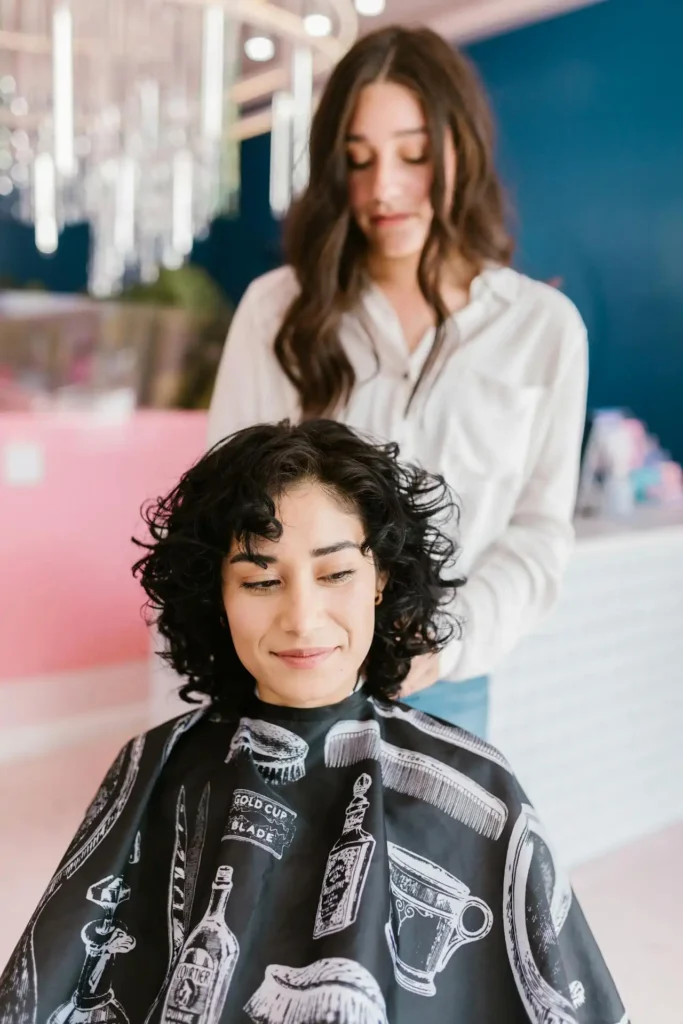
The best drying method ultimately depends on your individual needs, preferences, and circumstances.
Both air-drying and blow-drying can be part of a healthy hair care routine when done correctly.
Evaluate your hair type, lifestyle, and styling goals honestly. If you love your natural texture and have time to spare, air-drying might be perfect for you.
If you prefer polished styles and need quick results, blow-drying could be your best option.
Remember that hair care isn’t one-size-fits-all. Pay attention to how your hair responds to different methods and adjust accordingly.
What works for your friend might not work for you, and what worked for you in the past might need adjustment as your hair changes with age, treatments, or environmental factors.
Your hair will tell you what it needs if you listen carefully to its condition and appearance over time.
Conclusion
Both air-drying and blow-drying have their place in modern hair care.
Choose based on your hair type, lifestyle needs, and styling preferences for the healthiest, most beautiful results.
